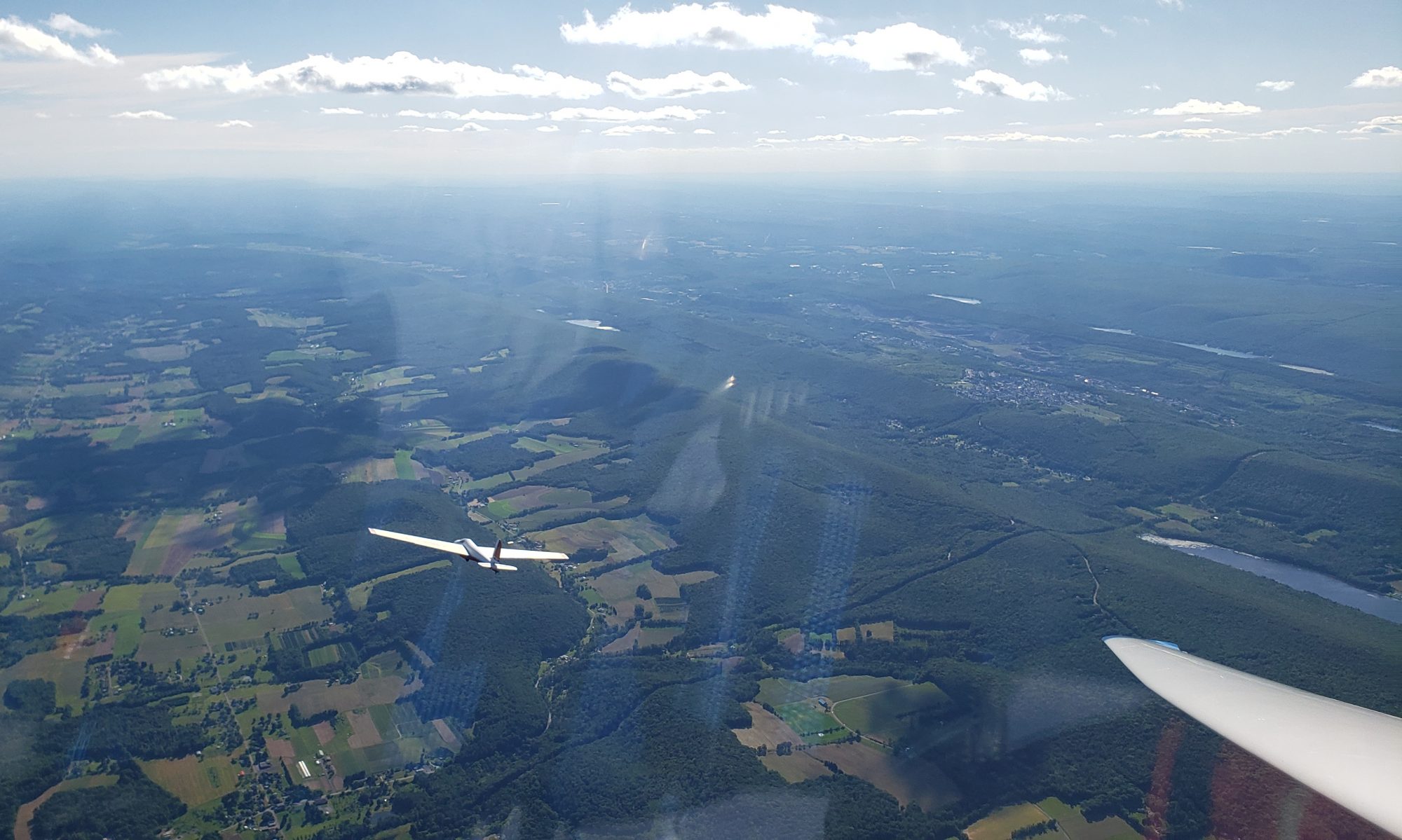You should not put yourself below ridge top. Should you attempt recovering below ridge top, you will be forced to fly low and slow in weak lift while in gusty conditions. This is dangerous. If you are a beginner, you must maintain good situational awareness and judgment to avoid these situations.
However, the Aero Club Albatross ridge training syllabus demonstrates a below ridge top recovery so that pilots: A) Understand how the ridge band works below ridge top, B) Are equipped with the knowledge to safely recover should they choose to.
1. How do we find ourselves below ridge top?
There are two ways to fall below ridge top. One way is because the ridge is too weak to sustain you above. In such a case, you should immediately leave the ridge and head for a field in the valley below. If the ridge is not working above ridge top, it will certainly be no better further below. A good minimum for a weak ridge is 150ft above the trees at Best Glide speed. Note that this is a minimum. Mentors and coaches would be wise to advise beginners to fly in considerably stronger conditions.
Also, a pilot can fly lower and faster if they would like to, but the ridge needs to be commensurately stronger allow them to go 10+ knots faster 50-100ft above ridge top.
If you settle down to ridge top, then expect to leave in short order.
The second reason we can find ourselves below ridge top is if we are transitioning low from elsewhere to a working ridge. For example, if we are crossing a gap and encounter sink in the middle of the transition.
Beginners should be doing transitions with ample energy so that they don’t end up below ridge top on the other side.
2. Does a ridge work below ridge top?
Sometimes yes, sometimes no. It depends on the wind speed, direction, and shape of the mountain. If the angle is off, you will often find the wind funnels parallel below ridge top and the lift works very poorly. If the angle is closer to perpendicular, there is a better chance that it will work. The next factor is wind speed. Sometimes the wind at ridge top is sufficient for the ridge to work well, but when you get 100ft or more below, the wind weakens to the point that the lift can no longer sustain a glider. The final factor is ridge shape. Usually a ridge flattens out toward its base. If the slope becomes sufficiently flat, even a strong wind will not deflect sufficiently upwards to sustain a glider.
However, if the slope is sufficiently steep, the angle sufficiently good and the wind sufficiently strong, it can be possible to recover 1/3 to 1/2 of the way below ridge top.
3. What is the technique for recovering below ridge top?
The first step is to select an appropriate airspeed. Usually best glide speed is a sufficient minimum airspeed. Next, slide into the ridge band at a flat angle. You will need to be right up against the trees as the lift band below ridge top is usually very narrow. Expect the lift to be weak; it can take a long time to work your way up. As you fly in the weak lift, avoid the temptation to turn in little gusts as you are more likely to lose more altitude than you will gain in the turn.
At any time, be prepared to turn away from the ridge. If you hit sink or turbulence, be on a hair trigger to turn away from the ridge and give yourself more room underneath you.
If you do decide to turn, recognize that you probably have only one shot. If you can complete the turn in lift, you will do well, but if you lose 50-100ft by misjudging the turn, you will likely fall into weaker lift below you.
_____________________
If this discussion sounds scary and risky, that’s because it is. Recovering from below ridge top is an expert maneuver and is not recommended for beginners. However, we emphasize these techniques for general knowledge and safety. At some point you may encounter a situation that requires applying these techniques. As a result, we train pilots such that they are familiar with what to do in these situations.
